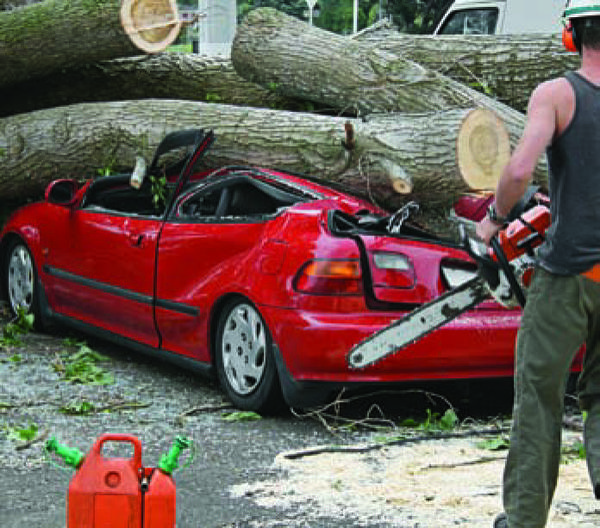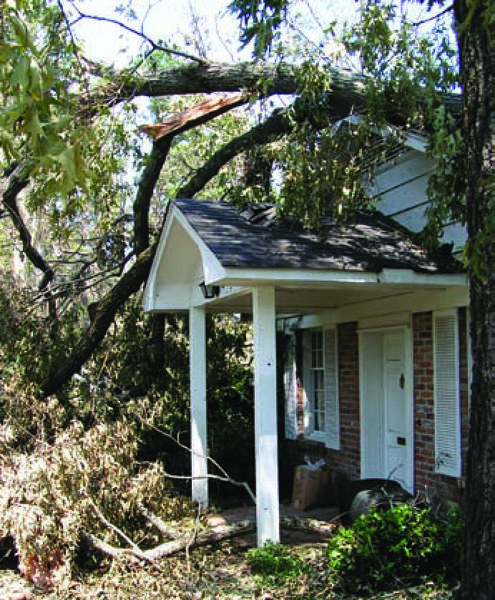Trees are often the most valuable assets in our landscape, so dedicating time and money to their care can be an excellent investment. As with any valuable investment, it is prudent to seek advice and service from skilled professionals. Hiring a tree care specialist deserves careful consideration and caution. A mistake can be expensive and the effects long lasting. The right choices can promote the health, beauty, value, and longevity of trees.
What Tree Care Professionals Do
Tree care professionals provide a variety of services to help protect trees. Full-service arborists transplant, prune, fertilize, manage pests, diagnose tree diseases, remove trees, and grind stumps. Consulting arborists are experts who offer advice, specializing in appraising trees, diagnosing problems, and recommending treatment, but they do not perform services.
Selecting a Tree Care Professional
Contact the following associations to obtain a list of certified professionals practicing in the area.
International Society of Arboriculture (ISA)
This society offers two levels of certification that are relevant to residential consumers. Prerequisite for either certification is 18 months of experience in arboriculture:
- Certified Arborist: One written exam demonstrating a broad basic knowledge of tree biology, species identification and selection, soils and tree nutrition, planting, pruning, and problem diagnosis and management. It also requires 30 hours of continuing education every three years.
- Certified Tree Worker: Two exams: an oral test on all aspects of tree care, and a practical exam covering climbing skills and aerial rescue procedures. It also requires 15 hours of continuing education every three years.
Tree Care Industry Association
TCIA provides accreditation and certification services. Membership in TCIA consists of commercial tree care service firms. The organization has developed sets of standards for pruning and other techniques widely used in the industry.
The American Society of Consulting Arborists
Membership is for practicing arborists who specialize in advising, diagnosing, recommending treatments, making appraisals, and offering legal testimony in court. It requires an academic foundation, extensive work experience, professional affiliations, and references, signifying a high degree of professionalism in arboriculture.
North Carolina Board of Registration for Foresters
Registered foresters focus on management of forests and wild lands for wood, water, forage, recreational opportunities, and wildlife. Certification requires a B.S. in Forestry or six years of experience in the field and passing a comprehensive exam. Ten hours of continuing education required each year.
Look for a combination of education, experience, certifications, licenses, and references.
Certifications
Ask for proof of membership in professional organizations and for professional certifications. These demonstrate a basic level of professional capability and commitment to the field.
Insurance
Request that a certificate of insurance (including proof of liability for personal and property damage) be sent directly from the insurance agent. This does not cost either party any money. Be sure to call the insurance company to verify that the policy is current, even if the certificate has not expired. Inquire whether the firm carries workers’ compensation. More than one person working constitutes a “business operation and employment of employees.” Therefore, the company must carry all state-required insurance and pay the required taxes. Under some circumstances, homeowners can be held financially responsible if an uninsured worker is hurt on their property or damages a neighbor’s property (Figure 1).
References
Ask for and verify local references. Visit and inspect previous work. Talk to former clients. Experience, education, and a good reputation are signs of a good arborist.
Estimates
Obtain estimates from more than one arborist. There may be a fee for the estimate, but a second opinion can be invaluable. The arborist’s skill, reputation, and professionalism may be more important than a low bid.
Cost
Well-maintained trees can contribute 15 percent or more to property value, so the expense of proper care is an important investment. Commercial arborists make large investments in equipment and training. Trucks, hydraulic booms, chippers, sprayers, stump cutters, and chain saws represent major capital investments and maintenance costs. Labor, insurance, safety training, and continuing education add to the overhead. The price charged for the job reflects all of these costs as well as a reasonable margin of profit. Scheduling work well in advance might reduce costs. Another cost-saving strategy is to coordinate with neighbors and potentially receive a group discount.
Contract
A contract is the key to preventing misunderstandings and assuring the work is performed to expected standards. Most companies have their own forms, and conditions vary widely. Read the document carefully and check with an attorney for answers to questions. There are several key items that a contract should include:
- Beginning and ending date of tree care work.
- Clear statement of work to be done. For example, “Prune all dead, dying, diseased, and weak branches 1.5 inches or greater in diameter on three oaks in the front yard and six maples in the back yard.”
- Specify that the work will be done according to the International Society of Arboriculture, Southern Chapter, Pruning Standards, and the ANSI Z133.1, 2017 Safety Standards.
- If a tree is to be sprayed, get a written statement detailing the specific insect or disease to be treated, the chemical to be used and how much will be applied, as well as homeowner responsibilities (such as cover lawn furniture and keep pets inside). In addition, request proof of commercial pesticide applicator's license.
- If fertilizing is to be done, specify type, amount, and method of application. Include a rough map of the property identifying trees to be serviced or a clearly written description of location.
- Specify what clean-up work will be done and when.
- Clarify who will get any firewood, wood chips, or other materials. If the wood is for the homeowner, specify what length is desired and where it should be stacked or piled.
- Clarify if tree removal includes grinding out the stump and surface roots to one foot below grade, filling with topsoil, and planting grass.
- What is the absolute total dollar amount to be charged? Leave no room for confusion over whether the price is per tree or for the whole job. Work is usually priced as a single fee for the whole job or on an hourly basis plus materials. When using the latter, be sure to include the wording, “but not to exceed...”
Beware of people soliciting work door-to-door without identification on their vehicle, uniform, or I.D. card. “Door knockers” are especially common after storms, when there is an opportunity for quick money. However, storm damage often creates high-risk situations for both workers and homeowners (Figure 2). Working near downed electrical power lines requires special certification and licensing. In addition, trees damaged by the storm can be further injured if work is not done correctly. Never be rushed by bargains, and never pay in advance.
References
Bardon, R. E. 2006. First . . . See a Forester. AG 619. North Carolina Cooperative Extension. Raleigh: NC State University.
Bardon, R.E., M.A. Megalos, and A.L. Graul. 2007. Construction and Tree Protection. AG-685. North Carolina Cooperative Extension. Raleigh, NC State University.
Fazio, J. R. 2006. How to Hire an Arborist. Tree City USA Bulletin No. 6. Palo Alto, CA: CANOPY Trees.
Sandfort, S. and E. Butcher. 2004. Urban Forestry Home Workbook. American Forestry Association: International Society of Arboriculture.
International Society of Arboriculture (ISA). 2004. Why Hire an Arborist. Champaign, IL: ISA.
Acknowledgments
Funding for this project was provided in part through an Urban and Community Forestry Grant from the North Carolina Division of Forest Resources, Department of Environment and Natural Resources, in cooperation with the USDA Forest Service, Southern Region.
Publication date: Oct. 21, 2019
AG-691
N.C. Cooperative Extension prohibits discrimination and harassment regardless of age, color, disability, family and marital status, gender identity, national origin, political beliefs, race, religion, sex (including pregnancy), sexual orientation and veteran status.


